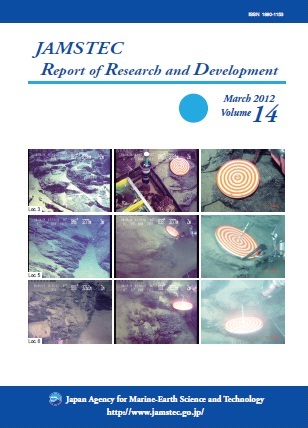The top clinometer is a newly developed payload tool which enables a submersible vehicle to directly measure orientation of planar geological structures (e.g. bedding planes, faults) on seafloor outcrops. It consists of a disc and central vertical bar, both graduated at 1 cm scales, and a handle. On seafloor outcrops, the disc is placed on the geological surface of interest by a manipulator, and is captured by a still camera. The orientations are determined via simple onboard graphic analyses of the images obtained and the submersible log data. Strike and dip of the surface structures are routinely calculated by a macro program within a Microsoft Excel worksheet. Theoretical and laboratory tests suggest errors of the measurements in the same order as magnetic clinometer compasses commonly used for on-land geological surveys. Camera installation angles to the submersible
Shinkai 6500 were also calibrated based on on-deck tests during R/V
Yokosuka YK08-05 and YK10-13 Leg2 cruises. Results of three practical measurements suggested that speed of the operation depends heavily on the time spent looking for the target surfaces and the time for communication between operators and scientists. Besides these factors, a measurement can be taken in as little as five minutes. This simple and quick method improves the quality of structural measurements for submarine geology.
抄録全体を表示
